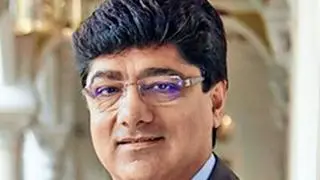At 47, K Satish Reddy wears two important hats in the Indian pharma world. He is the Chairman of the ₹13,217-crore Dr Reddy’s Laboratories and also President of the Indian Pharmaceutical Alliance (IPA), a powerful industry body.
He assumed Chairmanship of the Hyderabad-based Dr Reddy’s in May, succeeding his father and one of the giants of Indian pharma, K Anji Reddy. In his first interview after assuming charge as Chairman, he shared his views on a wide range of issues with BusinessLine .
In recent times, several Indian Pharma companies are beset with USFDA inspections, product recalls and quality issues. In some cases, it has had an impact on both business and image. How is Dr Reddy’s handling this situation?
If you see the issue in terms of USFDA, warning letters were issued to quite a few Indian companies. However, it’s not only Indian companies, but multinational companies worldwide, including innovative and large generic companies, got such letters. Even in India, multinationals with plants here have been subjected to these reviews.
So, I don’t see these developments as a witch hunt. It’s in a way drawing increased attention towards the regulatory regime in India. If you see exports from India, out of an approximate $13 billion, $4 billion go to the US. From the US regulator’s side, there are also concerns about how to assure the safety of these products. The regulator indicated that it would step up inspections abroad. Another major reason why the whole issue started is China where controversy arose on spurious drugs.
From the Indian perspective, the issue is about Ranbaxy receiving a string of warnings and alerts, followed by other companies. Now, this does not mean that there is problem with the quality of the product. It all boils down to the current good manufacturing practices.
How do you de-link manufacturing practices from the quality of products?
They want to see how systems are maintained in manufacturing. The FDA is not saying the quality of Indian firms’ products is bad. For example, there are different types of recalls including the ones which might happen, due to detections of package defects, etc, in some early batches.
From Indian companies’ perspective, there are already good regulations in place and the issue is about evolving standards. As the industry keeps growing, regulatory standards keep expanding, the question is, have we raised the bar so high that we are not able to touch it?
Have these issues dented India’s image?
In a way yes. But also, the method of analysis of the quality of Indian drugs has been faulty as has been found in a recent episode in the US. So, there has been a vicious campaign to tarnish the image of Indian drugs as well.
In the context of the Sun Pharma-Ranbaxy deal, how do you see the industry in terms of consolidation?
The Indian pharma industry is in need of consolidation. But just one deal will not change the dynamics. The Sun Pharma-Ranbaxy deal was a smart one. But will this lead to more deals? We don’t know. In M&A, there is also a buyer and seller. Initial deals have destroyed valuations and that’s why consolidation did not take place. Will this change post-Sun Pharma-Ranbaxy deal? The valuations of the deal have to be seen in a different context. They acquired distressed assets and turned them around. They got excellent valuations.
New product launches would become restrictedly expensive for small Indian companies. Only the big will have an advantage. Statistics show a reduction in the number of new products being launched. The second part is the impact of cost. It will squeeze the margins.
There has been a consistent talk about the global generic opportunity for Indian drug-makers with many drugs going off the patent in the recent years. How far have we been able to cash in on this front?
Indian companies are very well-poised to take advantage of the opportunity. But the game is shifting. The attractiveness of the First-to-File is not the same today due to shared exclusivity. So, companies are now moving to complex generics. Top Indian companies have also launched products in this direction and they have been successful.
There have been regulatory issues pertaining to clinical trials in India. What’s your view?
There is regulation in the country and people are following. But because of a few rotten apples, some things have happened, activists stepped in and the Supreme Court intervened. Delays in approvals, complexity of new requirements to be met in the generics are forcing Indian companies to go abroad for clinical trials even though the cost is five to 10 times higher. The other aspect is the regulation being put into place. There has to be collaborative effort involving industry, which is missing.
What are the expectations from the new Government?
Incentivising innovation would be a major requirement. Companies need to spend enormous amount on R&D. Even Dr Reddy’s took the risk at a very early stage and proved that things can be done. However, a policy framework has to be provided, which encourages innovation.
The whole regulatory environment should be made collaborative and all stakeholders need to be involved. In terms of expanding the whole healthcare and access, health infrastructure has to be built. It cannot be just left to the private players. Public-private partnership and newer models that make it work are essential. We need more doctors. Human resources have to be created and skill gaps bridged.








Comments
Comments have to be in English, and in full sentences. They cannot be abusive or personal. Please abide by our community guidelines for posting your comments.
We have migrated to a new commenting platform. If you are already a registered user of TheHindu Businessline and logged in, you may continue to engage with our articles. If you do not have an account please register and login to post comments. Users can access their older comments by logging into their accounts on Vuukle.